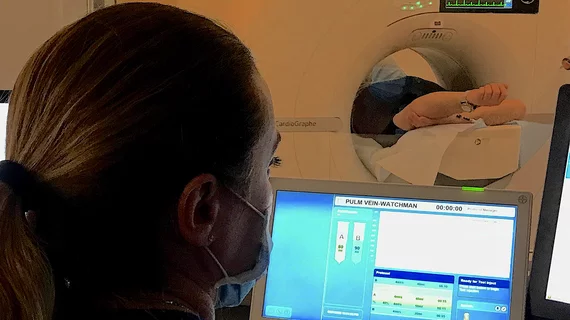Multidose contrast injectors could increase waste in some radiology departments
Multidose contrast media injectors are known to be beneficial for optimizing dosages and preserving supplies, but their utility may be limited by patient volume, new data suggest.
A recent analysis published in Academic Radiology indicates that multidose injectors are most beneficial in high throughput departments and may eliminate contrast waste completely in these settings. Conversely, waste may actually increase when these injectors are used in facilities that scan fewer patients.
These findings are important from both environmental and operational standpoints, authors of the new paper point out.
“The rising annual number of contrast-enhanced CT scans and the growing demand for ICM are contributing to significant pharmaceutical waste, posing significant environmental and economic challenges,” Vahid Yaghmai, MD, from the Department of Radiological Sciences at University of California Irvine, and colleagues explain. “Moreover, iodinated contrast media have been detected in sewage, surface water, and drinking water worldwide. Standard purification techniques are insufficient to remove these substances, leading to unresolved concerns regarding drinking water safety.”
Multidose injectors typically contain 500 ml of contrast with an 8-hour usage window after ICM bags are opened. Once the time has lapsed, it is advised that any leftover contrast is disposed. Depending on the number of patients scanned during the usage window, the volume of contrast left can vary widely.
To determine how patient volume impacts contrast waste, the team analyzed every CT scan conducted using a multidose injector in their organization’s emergency department over a one-year period. The group calculated the contrast volume used for each patient and recorded the dates and times of exams.
Once the volume used was determined, the team calculated the amount of contrast waste that may have occurred for the same patient cohort if single-dose vials had been used instead. The impact of patient volume was further evaluated in six different subgroups of patient counts ranging from less than 10 per day to greater than 50.
More than 12,000 scans were included in the analysis. Overall, the team determined that multidose injectors reduced contrast waste by around 86% in comparison to single-dose alternatives. When 50 or more patients were scanned, zero waste was observed; similarly, 40 or more exams per day resulted in minimal waste.
Conversely, the group estimated that waste would nearly triple in slower departments that do less than 10 contrast-enhanced exams per day. For facilities that perform between 10 and 20 contrast-enhanced studies, waste would be around 76% higher using multi- instead of single-dose injectors.
The team determined that daily waste reduction was highly likely starting with 20 or more exams.
“This suggests that CT suites with high patient throughput, operating 24 hours a day and scanning one to two patients per hour, would greatly benefit from adopting multidose injectors,” the authors note. “These facilities can maximize the use of contrast media within the 8-hour limit, thereby minimizing waste and enhancing cost efficiency.”
These findings should be considered when choosing which injection system best suits an organization's needs, as not all departments would benefit from multidose injectors, the authors suggest.
Learn more about the findings here.

